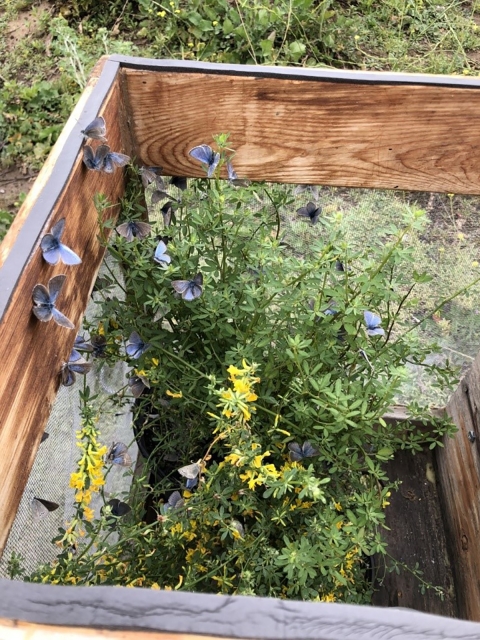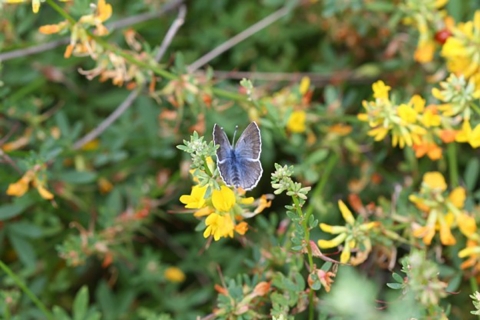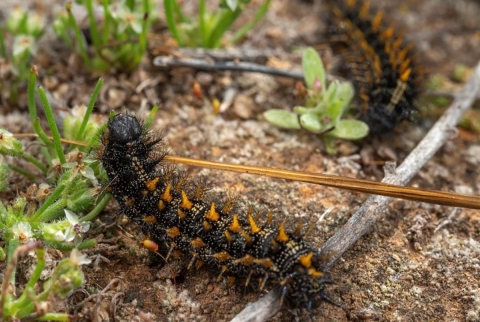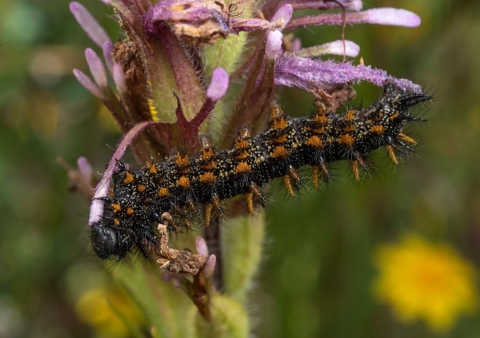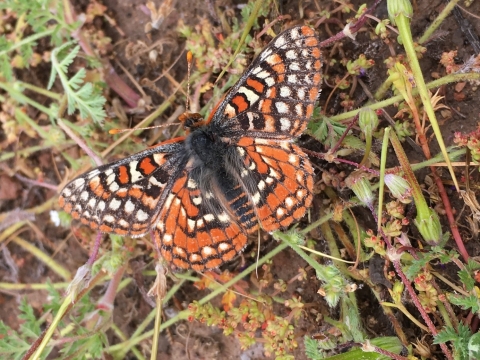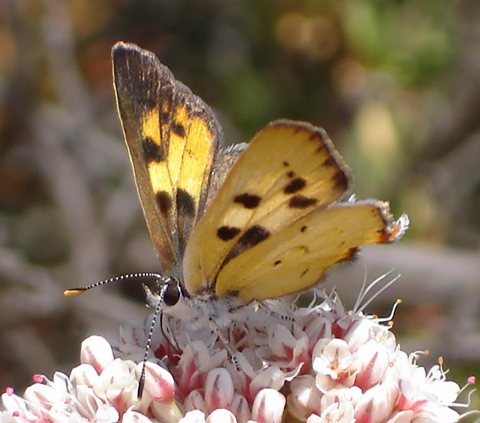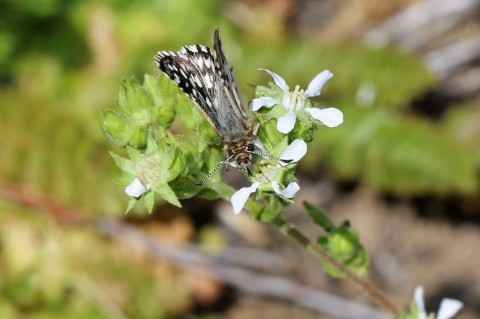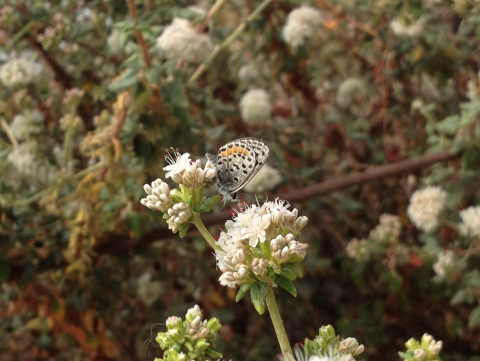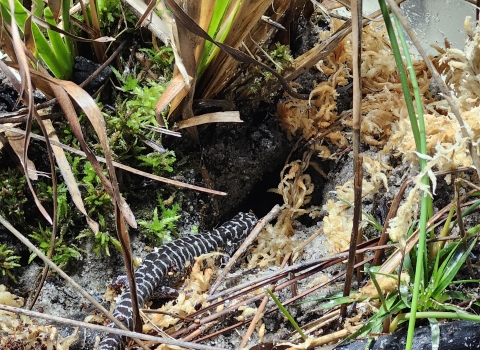Summer is in the air and so are butterflies! Southern California is home to several species of federally endangered butterflies. Two of which — the Palos Verdes blue (Glaucopsyche lygdamus palosverdesensis) and Quino checkerspot (Euphydryas editha quino) — are being captive reared and released into the wild to boost recovery.
The Palos Verdes blue, once thought to be extinct, was rediscovered in 1994. This sighting prompted further partnership efforts from the U.S. Fish and Wildlife Service, Palos Verdes Peninsula Land Conservancy, America’s Teaching Zoo at Moorpark College and several other organizations to help bring the species back from the brink.
Recently, the Moorpark team released captive-reared Palos Verdes blue butterflies on the Land Conservancy’s Palos Verdes Nature Preserve in Los Angeles County. Both mating and egg laying (ovipositing) were observed two days after release indicating that the butterflies wasted no time making themselves at home.
Unique color patterns distinguish the genders. Both males and females have gray bottom (ventral) wings with dark spots surrounded by white. Males have silvery-blue top (dorsal) wings with a narrow black border while females sport brownish-gray wings. These beauties will spend their days feasting on nectar from a variety of flowers.
In addition, the San Diego Zoo recently released about 2,500 Quino checkerspot caterpillars on the San Diego National Wildlife Refuge. The spring rain brought a bounty of dwarf plantain (Plantago erecta), most likely making some hungry and subsequently large caterpillars, very happy. They also took advantage of a secondary host plant, purple owl’s clover (Castilleja exserta).
The biologists were surprised by a couple of their observations. The larvae postponed diapause, a period of dormancy during the dry season, to chow down, which isn’t too common. In another twist, fresh adults were observed at the release site, indicating that some of the caterpillars could have skipped the diapause stage altogether. Typically, the species lives for several years as caterpillars before becoming butterflies, but this group was apparently ready to take on adult responsibilities.
The cycle of life continues with males patrolling the area, establishing territories and winning over mates. We expect the area will soon see a new generation of this brush-footed butterfly displaying its checkerboard-pattern of brick-red, black and white wings, perhaps distinctively standing on only four of its six legs.
Over the past five years, more than 12,000 Quino checkerspot larvae have been released into historical habitat on the refuge and other conserved lands in a collaborative effort with the Zoo, the Service and partnering agencies.
How can you help?
Join the conservation effort as a citizen scientist. By reporting butterfly sightings, you help scientists track population numbers and better understand wildlife and habitat conditions.
Keep a special lookout for these rarer butterfly species:
Hermes copper (Lycaena [Hermelycaena] hermes)
Found in San Diego County and northwestern Baja California, Mexico, this species deposits its eggs on spiny redberry (Rhamnus crocea) bushes found in sage scrub and chaparral habitats. A member of the Lycaenidae family, adults are brown with yellow-orange on their upper wings and have yellow undersides with black dots. They are activefrom late May through July, seeking nectar from buckwheat. The Service proposed listing Hermes copper as threatened under the Endangered Species Act on January 8, 2020.
Laguna Mountains skipper (Pyrgus ruralis lagunae)
Named for the mountains where it was first identified, this endangered species is now found only on Palomar Mountain in San Diego County. A member of the Hesperiidae family, this butterfly gets nectar from whatever is flowering, but prefers to deposit its eggs on the outer leaves of Cleveland’s horkelia (Horkelia clevelandii). Skippers can be identified by a few unique characteristics. When resting, they drape their wings against their bodies or hold them flat, instead of folding them up above their backs. Their antennae are also hook-shaped at the end, and they have an erratic flight pattern.
El Segundo blue (Euphilotes battoides allyni)
The endangered El Segundo blue makes its home in Los Angeles County’s coastal dunes. This thumbnail-sized creature is a huge fan of seacliff buckwheat (Eriogonum parvifolium) for its nectar and egg deposition. Eggs hatch within three to five days and caterpillars undergo four instars, which are developmental periods between molts. The caterpillars then find a suitable leaf or some sand to form their chrysalis. They’ll emerge from mid-June until early September and live out their butterfly lives from four days to two weeks.
We hope you get to see some of these amazing creatures this season, and thank you for your interest in wildlife!
(Information collected from Palos Verdes Peninsula Land Conservancy and San Diego Zoo)


